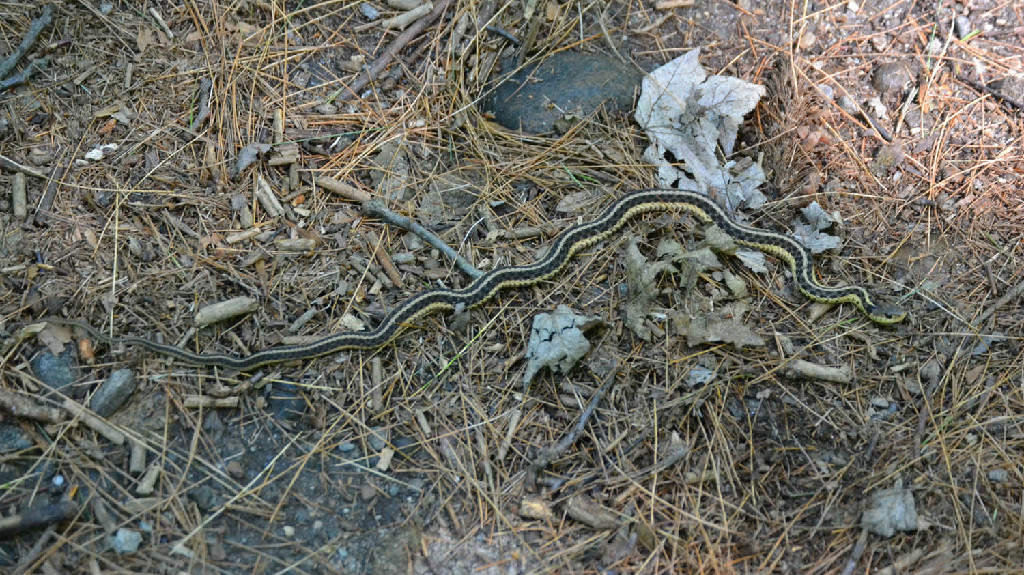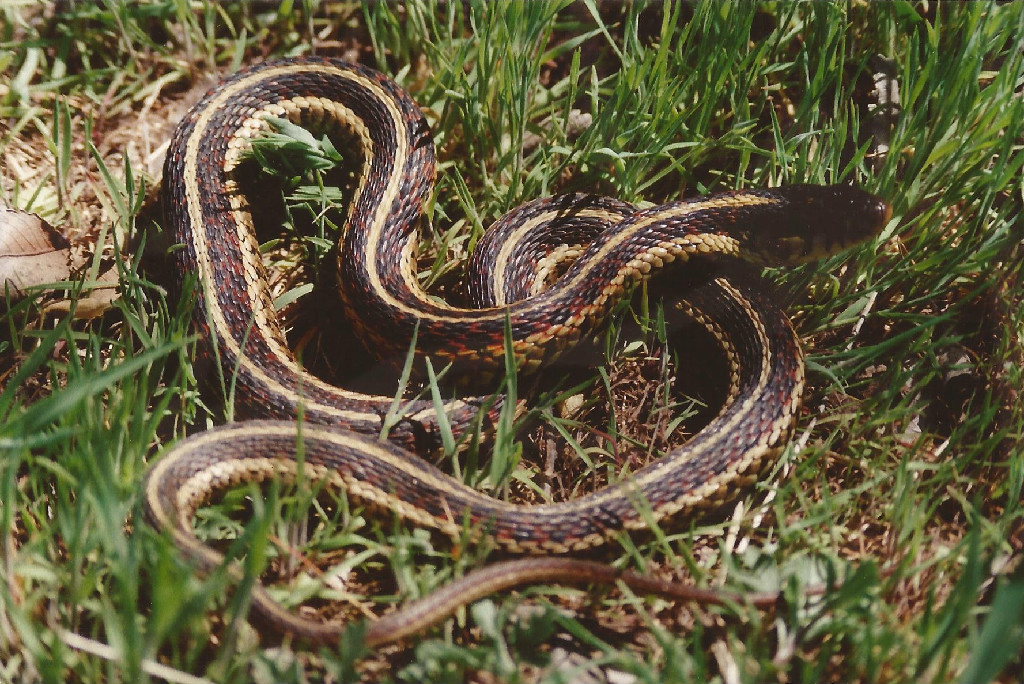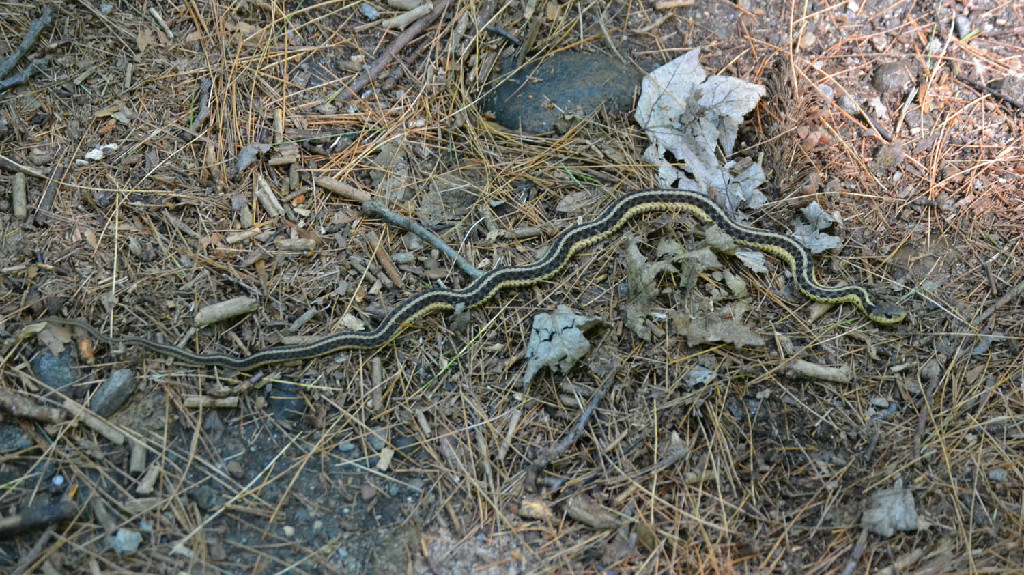
Eastern Garter Snake:
(Thamnophis sirtalis sirtalis)
Eastern garter snakes (thamnophis sirtalis sirtalis); commonly known as the garter snake is a member of the colubridae family. They average in size between 20 to 28 inches long, with the record being 48.75 inches long. Eastern garter snakes rarely ever grow over 4 feet long.
Eastern garter snakes are small and thin bodied. Their color patterns vary, and range from green, yellow, gold, red, orange, blue, brown and black with a light tan stripe running down the middle of its body as well as the sides of its body. Some eastern garter snakes have a checkered pattern covering its body having a grayish or red body color, with light stripes. Their bellies are light tan or a creamy color. Although some eastern garter snakes in Florida tend to have a blueish tint. Their heads are oval shaped and their pupils are round.
Eastern garter snakes are found throughout North American, including Florida. They inhabit areas such as fields, prairies, forests, marshes, wetlands, meadows, ponds and streams, any environment near bodies of water.
Eastern garter snakes are carnivores and primarily consume snails, slugs, earthworms, frogs, toads, lizards, fish and salamanders.
Eastern garter snakes are diurnal, meaning they are active during the day. In warmer climates like Florida, eastern garter snakes are active throughout the year and are mainly solitary. They are commonly spotted on or near rocks, logs, boards, drive – ways, sidewalks, leave and vegetation debris in neighborhoods. Eastern garter snakes are cold blooded reptiles, and can not regulate or maintain their body temperature on their own. On cooler or colder days during the winter season, they restrict their activity to the warm afternoons, usually basking in the sun. In the evening hours their body temperature quickly declines and depending on their shelters climate, weather its in natural cavities or burrows, several eastern garter snakes congregate together to prevent their body temperature from declining too low. In the northern regions that have harsher winter seasons, they will congregate in large numbers and hibernate, regulating and maintaining their body temperature for survival. Eastern garter snakes communicate with each other through touch and smell. Garter snakes are usually not aggressive, however they will defend themselves when handled or threatened by secreting a foul smelling fluid from their post anal glands as well as striking and biting if necessary. They are harmless to humans, although their bite may be harmless it may cause swelling, itching, burning and some slight bleeding, including the risk of a bacterial infection.

